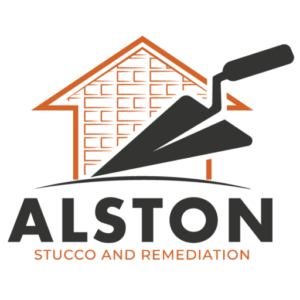Exterior finish matters a lot, not just for the exterior look of your house but for durability and aesthetics. Two popular choices stand out in this stage, Dryvit stucco (EIFS) and traditional stucco. Both options are praised in strength, but some performance and composition differences make it difficult to choose.
Let’s break down both of them thoroughly so you know which is the better option for your building exterior next time!
What is Dryvit Stucco and How Does It Work?

Dryvit stucco is a brand name of EIFS (Exterior Insulation and Finish System), which is a wall cladding system with a protective finish coat. The installation process is easy, giving highly versatile results. First, an insulation board is attached to the exterior, then a base coat is applied with fibreglass, and finally, a decorative finished coat is applied. This process results in a lightweight and energy-efficient exterior finish.
How is Traditional Stucco Installed?
Traditional stucco has been in the industry for centuries. It is called traditional because it is a mixture of simple materials and requires multiple layers on the wall, not just one. This process requires more labour because of multiple coats. Traditional stitches are less insulating but give a timeless look. Here are the materials:
- Portland cement (or other cementitious binder)
- Sand (find aggregate)
- Lime (to add some flexibility)
- Water
- Occasionally, modifications (polymers, fibres)
Three-Coat Layering Process
The simple installation of traditional stucco requires three main coats over a wire mesh support system:
1- Scratch Coat: The first layer is scratched to provide a key for the next coat
2- Brown Coat: Levelling coat to bring a uniform thickness.
3- Finish Coat: Final decorative layer applied on the top for texture and protection.
What Are the Key Differences in Composition and Appearance?
Both stucco options are different in many aspects, such as cost, durability and more. Here is how they are different in composition and appearance:
Dryvit Stucco (EIFS)
- Built with insulation boards, base coat, and finish coat.
- Lightweight and flexible, a wide range of colours and textures can mimic brick or stone.
TraditionalStucco
- Made from cement-cased mixtures.
- Heavy and rigid.
- Classic appearance but few customisation options.
Which One’s Durability is Better?
Checking the durability of stucco is important as it offers long-term wall coating health.
Dryvit Stucco: Offers moisture resistance and installation only if installed well. Your negligence can sometimes lead to water damage.
Traditional Stucco: It can absorb water, which results in cracks, mould and mildew. Traditional style is long-lasting.
Why Do Homeowners Prefer Dryvit Over Traditional Stucco?
Many homeowners are choosing Dryvit over traditional materials for their home, corporation or other building. Want to know why? Here are three major reasons:

Energy Efficiency: Dryvit stucco has insulation layers that help reduce heat and cooling costs. People who prefer eco-consciousness choose this over the traditional one.
Design Flexibility: Unlike traditional dryvit stucco, multiple textures and finishing options allow people to choose the overall house theme.
Low Maintenance: Durability is another factor people choose because Dryvit stucco lasts for a long time when maintained properly. It’s more resistant to fading and cracking.
Is Dryvit Stucco More Eco-Friendly?
Indeed! One of the major reasons for the instant growth of this stucco industry is its sustainability. It is made of recycled materials and provides energy-saving insulation. Most people are now aware of environmental health on Earth and want to make eco-friendly choices, so this topic is perfect for building practices. Traditional stucco lacks energy efficiency, no matter how natural in composition.
How Do Maintenance and Longevity Compare?
Low-quality stucco means high maintenance and more costs spent in future. That’s why people prefer high-quality and one-time stucco installation.
Dryvit Stucco: It demands occasional cleaning only and minimal upkeep.
Traditional Stucco: Offers frequent care to ensure longevity.
For homeowners, you require energy efficiency and design flexibility, put your hands on Dryvit stucco (EIFS), but if you love classic or time-tested exterior, traditional stucco is a good way to go. If you are confused, then consult a stucco expert who will ensure your investment lasts for decades, not just weeks.
